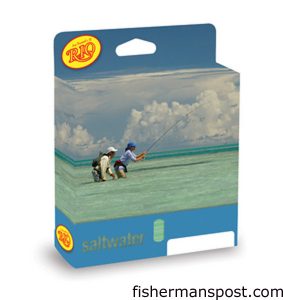Road To Redfish – Fly Reels And Rigging
You might think the topic of fly reels and rigging techniques would be fairly straightforward, and for the most part it is, especially if you’re discussing what gear to use while fishing for just one species. There are reels that cost $20 that will get the job done for those anglers on an extremely tight budget, there are reels that are rare, collectible and really expensive (such as the Seamaster series), and there are reels priced at every level in between.
Luckily for anyone following along with our recurring series, I will keep this discussion simple and focus on a very affordable setup: a solid fly reel with backing, line, and leader (and I’ll also cover the connections I would use to target just redfish).
Here in the shop we have a new reel, and we’re currently testing its life span and durability. It’s the Okuma SLV 7/8, and it has all the features needed in a good fly reel but retails for only around $60.
The Okuma SLV is made of a die-cast aluminum alloy which keeps the weight down as well as the cost. Its large arbor design helps with line retrieval speed and line memory. This has been the design of choice for modern fly reels.
The main shaft and bushing are stainless and brass, and the drag is stainless and cork, all components found in many high end reels.
Another benefit to the Okuma is that the startup inertia of the drag is light and smooth. This is very important in any type of fishing reel, as sticky drags have been the cause of many a lost fish. Startup inertia is the amount of force needed to start the drag from stop, and many reels take a little more drag to start (the reel may be set at 4 lbs. of drag, but it takes 6 lbs. to start).
The reel is also easily changed from right to left hand retrieve. I believe that the Okuma will handle most redfish with ease, and I wouldn’t hesitate to take it along on a bonefishing trip.
I just set one up for a local guide, and I’ll run through a typical rigging procedure.
First, we filled the reel with 200 yards of 20 pound braid for backing (more than enough for reds and adequate for bonefish). Then we tied a two foot Bimini Twist and doubled that with a Surgeons Knot to make a sturdy loop connection to attach to the loop on the back end of the fly line, making line changes easy.
Higher end Rio fly lines all have welded loops on each end, making rigging and changing lines and leaders a breeze. The affordable mainstream series of Rio lines—like the 8 weight we used—need to be rigged with double nail knots on the backing end to form a loop, a process that takes a little time but makes a good connection.
You then attach the fly line by passing the backing loop through the loop on the fly line and around the spool of fly line to form a “figure eight” style loop to loop connection.
After we wound the fly line on the reel, we attached a 2-foot section of 40 lb. mono to the end of the fly line with a nail knot, and then we finished it off with a small perfection loop. This is called a butt section, and it’s used to attach the leader to the fly line.
Leader can be handmade or store bought, and they should be tapered from heavier at the rod to lighter at the fly to extend the casting loop and aid in proper fly presentation. I prefer a 12-16 lb. Rio tapered leader to start, and as needed I will add tippet material to the end of the leader to add to its useful life while keeping the overall length between 7 and 9 feet.
Any of these knots and rigging techniques can be found online. Or for anyone who wants to stop in Intracoastal Angler, I would be more than happy to go over any part of the rigging process and give a hands-on demonstration.
When we’re done, this complete setup would cost you a little over $115 (the Okuma reel is $62, the Rio fly line is $36, the leader is $5, and the braid backing is about $15).
Thanks for reading, and hope to see you on the water.
Capt. Jon Huff is owner operator of Circle H Charters, an inshore fly and light tackle guide service based out of Wrightsville Beach. Jon splits his time between running inshore charters, fishing offshore tournaments, and co-managing Intracoastal Angler. (910) 617-2619, www.circlehcharters.com


